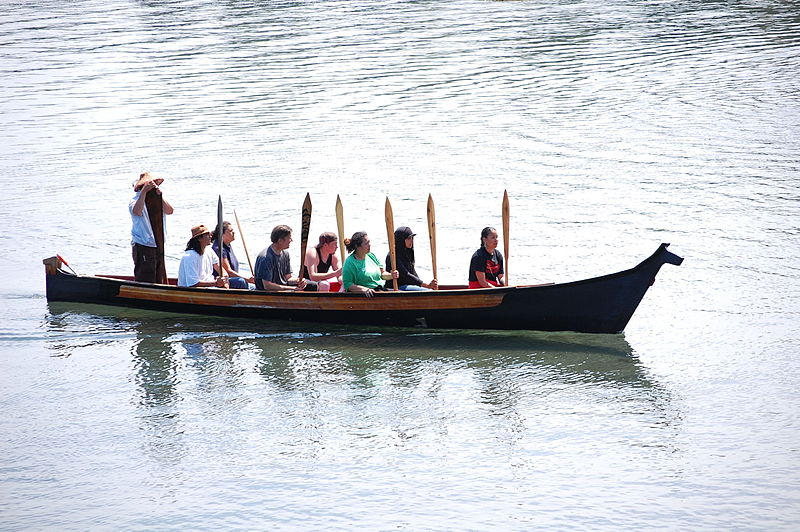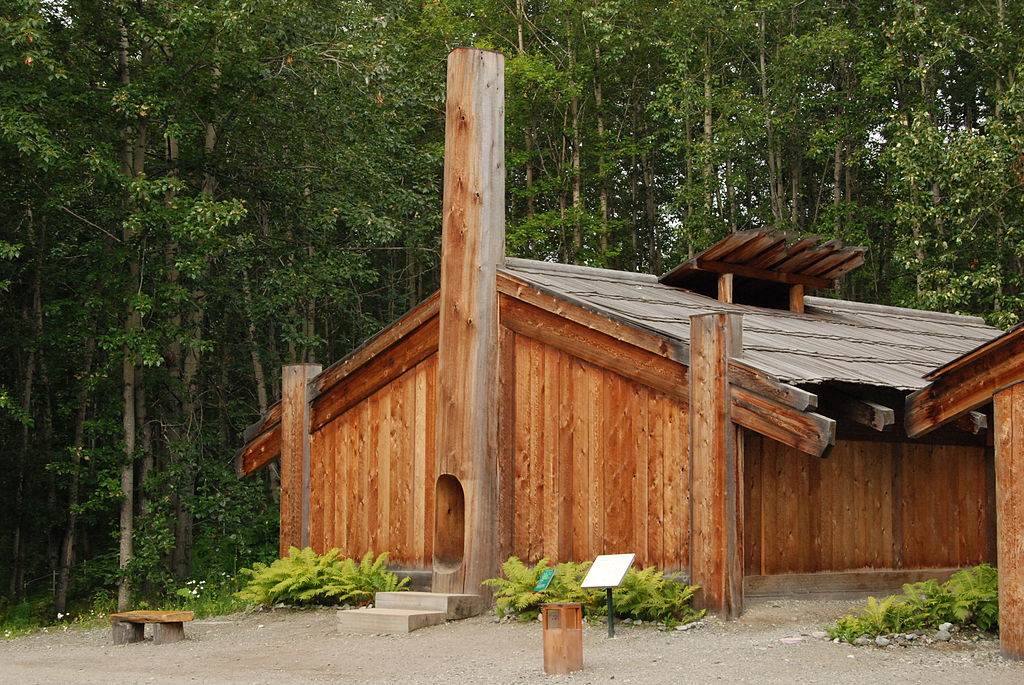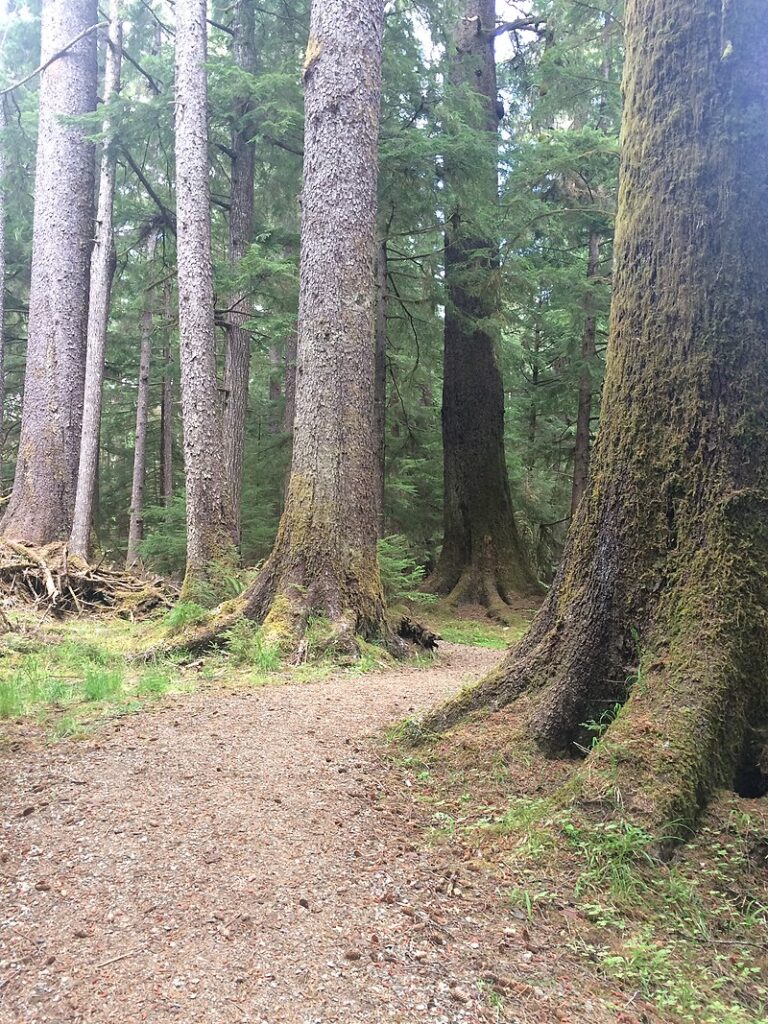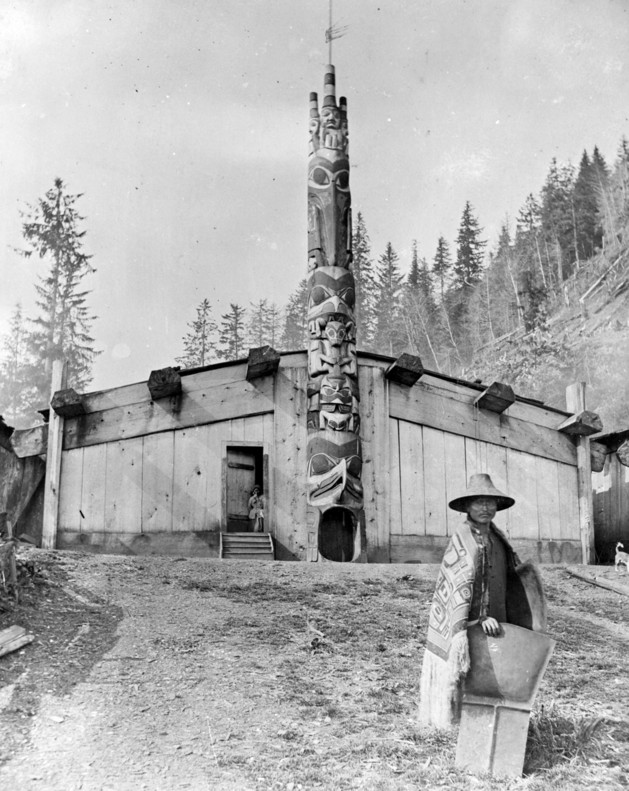Welcome to Ramping Up Your English Episode 114. We’re in the content unit of Native Americans, and this episode focuses on American Indians of the Pacific Northwest.


Watching Episode 114
Episode 114 is running on RVTV is Southern Oregon. Click here to watch the episode on archive.org. Episode 114 features the video Native American Part 24: Pacific Northwest. The long version of this video is linked below.




Episode Summary
The Pacific Northwest is a region known for generous precipitation, giant evergreen forests, and distinctive Native American culture. This episode should help viewers describe the people of this region and how they interacted with their natural surroundings, as well as the features unique to their culture.
Beginning in Southeast Alaska and moving down to Oregon, the Tlingit, Haida, Tsimshian, Suquamish and Duwamish are featured, along with their interactions with Europeans beginning with Russian fur traders, then Spanish and English explorers. Before Alaska became part of the United States, Captain Robert Gray brought the young Unites States into the trade. The Salish-speaking people of the Puget Sound region experienced deadly disease, warfare, and loss of land fromU.S. presence, but some developed peaceful coexistence for a time with settlers. Prominent among those was Chief Seattle. This episode features the speech he gave before Governor Stevens at a treaty conference – a speech that is acknowledged as a masterpiece of Indian oratory.
Chief Seattle’s Speech
Much has been made about the speech Chief Seattle gave when confronted with an offer to sell the land of his people to the U.S. Government. This being so, it’s surprisingly hard to find the original speech as recorded and shared by Doctor Henry Smith. It turns out that there are various versions of the speech. I endeavored to hold to the version that Smith published in 1887.
Analysis of the speech exists from several sources, yet I’ll share here my own impressions. Governor Stevens secured treaty signatures in order to make more land available to settlers from the United States, hence he held great power and had to be addressed carefully. The disarming beginning – using a weather metaphor – as well as the statements of good will were disarming and set the tone that facilitated the honest appraisal of the situation faced by American Indians.
Chief Seattle seems to take the grievances of unfair treatment to the limit, then suddenly refer to the proposal as generous or wise. He specifically declared that he would not blame his “paleface brothers” for the demise of his people. Then he would again relate the grievances.
The most poignant content centered around the fundamental difference between Indians and Whites, and how the God of the Whites was partial to them and hated the Red Man. Furthermore, he asserted that Great Spirit had abandoned the Red Man, and that they had no place to turn for help. He likens the plight of his people to a wounded doe that’s being pursued by hunters and declared that the Indian’s night promised to be a dark one….with no hope. He adds that it matters little where they spend the rest of their days; they will not be many.
In the speech, an attempt is made to bring understanding of the American Indian cosmology – specifically the sacredness of the land in which they live, extending even to the rocks on the coastline. The tone of the speech turns grim, but it’s broken up by comments like, “why should I morn the fate of my people?” and matter-of-fact comments about considering the proposal to sell their land.
Almost seamlessly, Chief Seattle delivers a warning to American Authorities – a warning that when living Indians are no longer present, their spirits will return to this sacred land – and those spirits are not powerless. He entreats the government to treat his people kindly, for those spirits will be ever-present and that the white man will never be alone.
Much has been altered in the speech, emphasizing the sacredness of the landscape as a call to environmentalism. Make no mistake, I deeply believe in taking care of the Earth, but this was not the reason for Seattle’s speech. Also, the emotionally cutting words are softened by some later versions – yet it’s the poignant nature of the speech that makes it so powerful.
For some of the more environmental themes, it’s asserted that these were made in a letter to President Franklin Pierce, but no such letter is to be found, and it’s been determined that a script writer is the actual source of those comments. These have often been mixed with the speech content, again watering down Chief Seattle’s great oratory.
Is it possible that the speech – published from notes some 30 years later – did not reproduce an exact quote from Chief Seattle? It certainly seems so. Nonetheless, in my view the speech stands as a masterpiece of oratory art and the expression of the plight of American Indians as a result of Manifest Destiny and Western Expansion. It also speaks to the diplomatic skills of this Indian leader, skills that are documented in his interactions with white settlers.
It was no easy task to find the entire speech in the sequence in which it was delivered as visual and auditory content. I used two sources, re- sequencing the video as the speech was sequenced and adding with my own voice the parts they left out. One source was Four Seasons Productions. Another was by Sacred Earth. I hope that between these sources and my own reading from the speech that viewers experience the full import of this unforgettable oratory. The full speech is contained in the featured video (The Long Version) that’s linked below. It’s near the end of the video. I highly recommend it.
Featured Video
When I assemble all the components of the featured video and produce them with the information I’ve gathered, the product is often too long to fit in a 30 minute episode. Before I start the painful process of editing to fit, I share the long version (before the editing) with viewers. Click here to see the long version of the featured video. Hint: The long version often has a much fuller content and richer viewing experience than after it’s been edited to fit. I always recommend the long version. (The shorter version has not been edited yet.)
Linked Videos
The following videos enrich the viewers experience with the featured content. Our first offering is one I highly recommend. It should be required viewing. For the best video presentation I’ve seen about American Indians in the Pacific Northwest, Click Here. I know that amost an hour and a half is a long time for viewing, but the viewer will get such great insights into Pacific Northwest Indian Culture that you’ll thank yourself for taking the time. If this time commitment is impossible for you, Click here to enjoy a shorter version. Seriously, you should watch this!
Another “required viewing” is Haida Gwaii Restoring Balance. Click here to watch this enlightening video about the logging conflict on Haida Gwaii and the response of the Haida community to this and other environmental issues.
The Haida erect totem poles in this video narrated by David Suzuki. Click here to watch. I’ve been a fan of Suzuki for decades. I recommend this video as well – and it’s way shorter! Suzuki has been adopted into a Haida clan. Totem Poles are the feature in a video produced for the National Museum of the American Indian. Click here to see it. The National Park Service at Sitka has a general presentation about Totem Poles that youn can see if you click here.
To watch an excellent video about the Tsimshian, Click here.
One commonality among American Indians of the Pacific Northwest is the centrality of the cedar tree. Click here to learn about this vital gift. Click here for a spiritual view of the cedar tree. Click here to learn how indigenous people of the Pacific Northwest are working to restore the cedar forest and respectfully use this important resource. Another great video is Voices of the Northwest Coast by the American Mueum of Natural History. Click here to watch it and to dig deeper.
In the featured video, the transition from Alaskan indigenous culture to that of the Puget Sound area was facilitated by part of the Coast Salish Anthem: Chief George’s Prayer Song. Click here to experience the entire hauntingly beautiful song. Click here to see how Salish people are working to rediscover and keep their trditional songs alive.
Chief Seattle was the head of two Puget Sound Tribes, the Suquamish and the Duwamish. Click here to see a video about the Duwamish loving today in the City of Seattle. For more on the Duwamish, click here for a video featuring the Chief of the Duwamish tribe.
There’s also the Snoqualmie people. Click here to see a video about a waterfall bearing the tribal name. Click here to see the Video Snoqualmie Indians Harvest.
Click here to see an excellent video about the potlatch of the Kwakwaka from the Museum of Anthropology.
Next Episode
Click here to go to the Episode 115 Page.